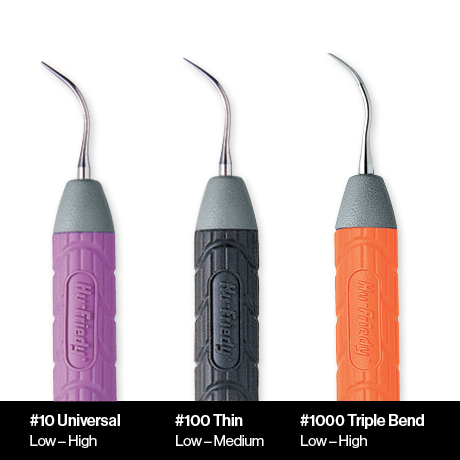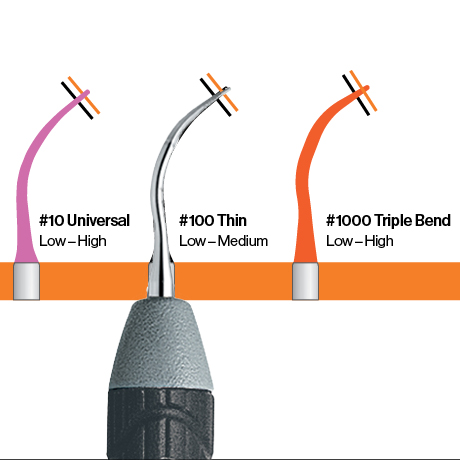

Just like your hand scalers, ultrasonic insert tips wear with use. Learn how worn inserts will affect you and your scaling efficiency, and how using an Insert Wear Guide can help!
CHECK YOUR INSERT
Have you noticed the “start, stop, reposition” routine required with traditional inserts? With a slight rolling motion of your fingertips the handle and tip of a SWIVEL insert will rotate 360° allowing for smooth and efficient power scaling!
HOW SMOOTH IS YOUR SCALING?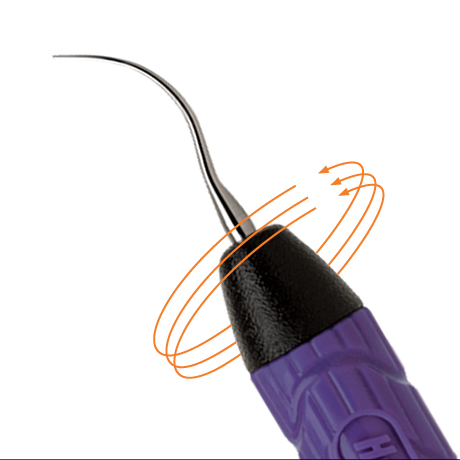
Why use the same type of ultrasonic insert for all your power scaling procedures when there are so many great choices to help you more efficiently and effectively remove calculus? Plus, Thin is in for ultrasonic scaling! Find out why.
CLICK HERE TO FIND OUT MORE!
What is the purpose of an o-ring? The o-ring on an ultrasonic insert serves as a seal to keep water from escaping or leaking from the handle. In addition, the o-ring helps secure the insert within the handpiece. As the water flows through the generator and into the handpiece, it must have pressure to reach its’ final destination at the tip of the insert.
CONTINUE READING!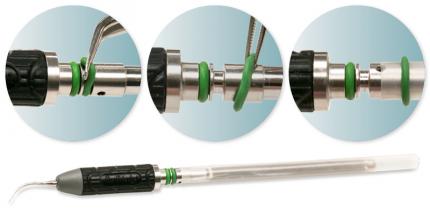
Power scaling is vital to your clinical practice. Proper cleaning and care will help extend the life of your ultrasonic inserts.
LEARN MORE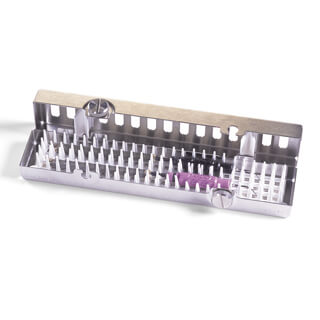
The working end and the grip of an ultrasonic insert are both essential for effective and efficient power scaling. However the stack is also a vital component that, when maintained properly, can help your inserts perform optimally--and help you perform at your best!
HOW DO YOU STACK UP?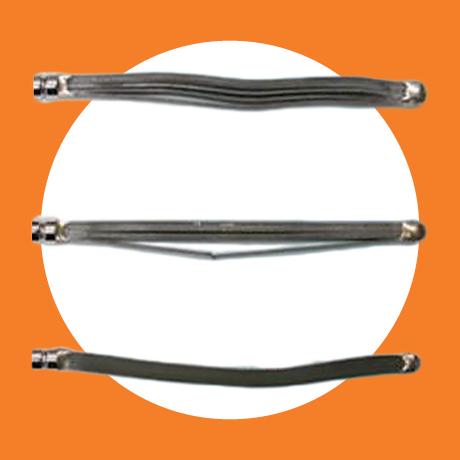
Imagine this…during an ultrasonic scaling procedure; your handpiece begins to feel warm. Continuing to scale, you hope that the temperature will decrease. However, the handpiece becomes even warmer -- to the point that you put down it down to either change the ultrasonic insert or switch to hand instrumentation.
DOES THIS ULTRASONIC SCALING SCENARIO SOUND FAMILIAR?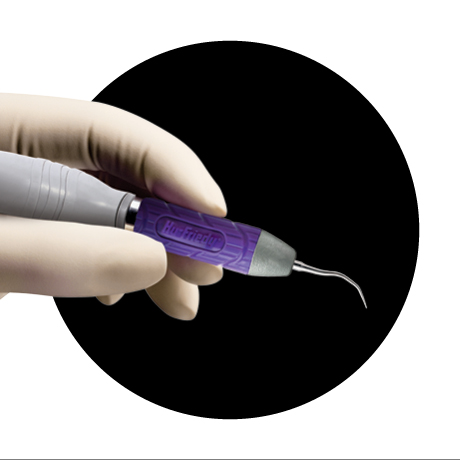
Kilohertz: a unit of frequency equal to 1,000 hertz — abbreviation: kHz Kilohertz refers to frequency –for ultrasonic inserts this means how often the insert tip vibrates in an oval, or elliptical, pattern. A 25 kHz insert will vibrate 25,000 cycles per second regardless of the power level setting on the generator. The same is true of a 30 kHz insert—it will move 30,000 cycles per second regardless of the power setting.
CLICK HERE TO LEARN MORE!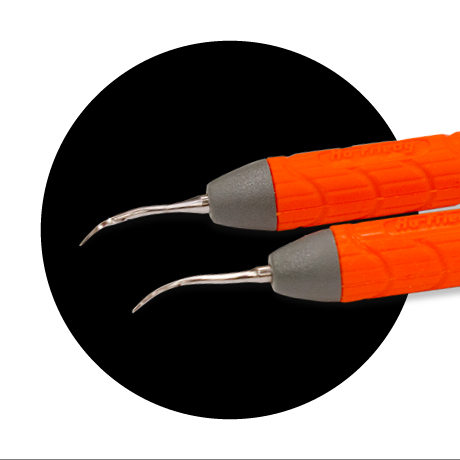
Are left and right ultrasonic inserts absent from your procedural set-ups because of uncertainty regarding how to correctly adapt the working ends to tooth surfaces? These ultrasonic inserts have many advantages including adapting well to complex anatomic features of posterior teeth such as furcations, tight interproximal areas, root concavities and narrow embrasure spaces.
CLICK HERE TO LEARN MORE!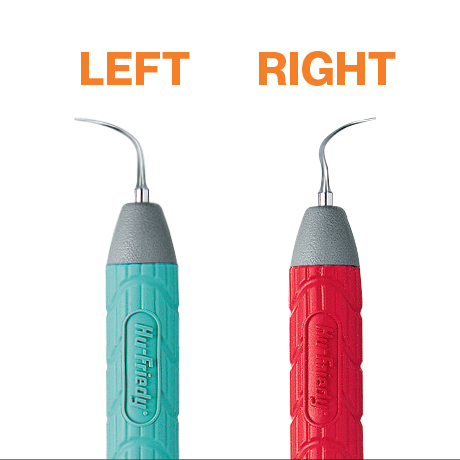
This special edition of Ultrasonic Insights features Tip Shape Q&A with Hu-Friedy Key Opinion Leader and Ultrasonics Expert, Nancy Miller. Nancy is a practicing clinician in General practice and a clinical technical advisor for HuFriedyGroup and other companies.
CLICK HERE TO LEARN MORE!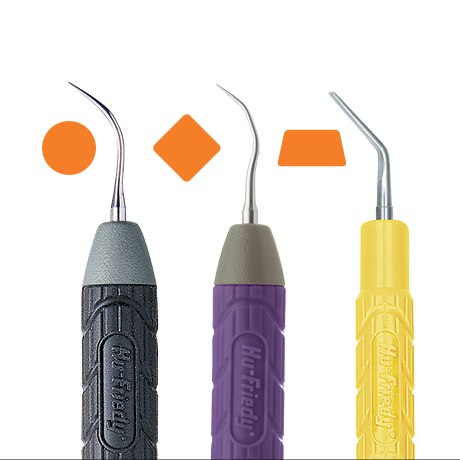
This special edition of Ultrasonic Insights features details of water delivery differences with Hu-Friedy Key Opinion Leader and Ultrasonic Expert, Nancy Miller. Nancy is a practicing clinician in General practice and a clinical technical advisor for HuFriedyGroup and other companies.
CLICK HERE TO LEARN MORE!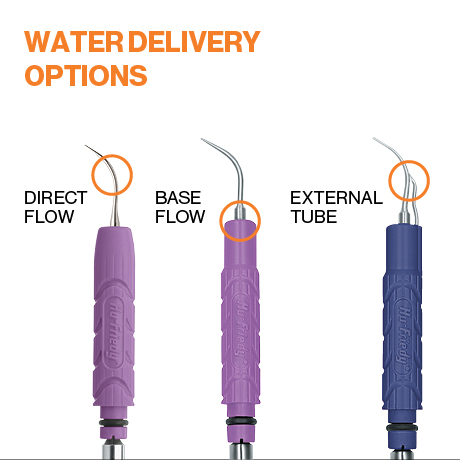
Removing calculus, especially subgingivally, is often anything but routine—pockets can be narrow or tight, teeth are often misaligned and furcations can be challenging. In addition, the absence of direct vision compels the clinician to perform procedures using tactile sense alone. Our line of XT Ultrasonic Inserts can provide solutions for these demanding clinical conditions.
CLICK HERE TO LEARN MORE!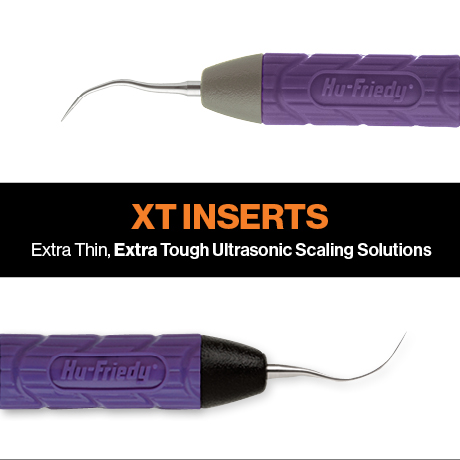
One Insert Cannot Do It All! Clinicians know one scaler cannot do it all. Scalers designed for heavy, anterior supragingival debris will be very different in dimension than those designed for light, posterior interproximal deposits. In a similar way, robust ultrasonic inserts designed for moderate to heavy deposits vary greatly in purpose from slimmer inserts—and can make deposit removal more efficient when added to procedural set-ups.
CLICK HERE TO LEARN MORE!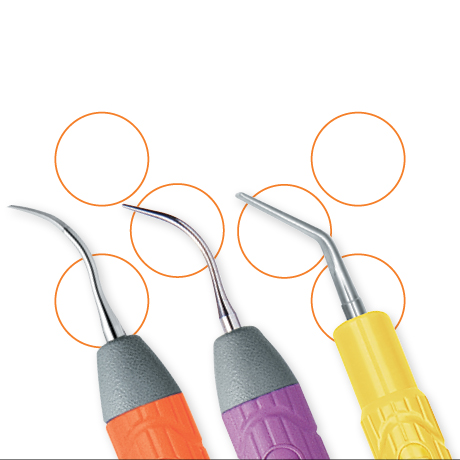
Removal of light to moderate deposits often requires an approach different from heavy deposits when selecting an ultrasonic insert for power scaling. A patient presenting with light to moderate deposit can be a candidate for treatment with slimmer diameter inserts. And, for patients with heavy deposits who are initially treated with robust inserts such as our #10, #1000 or Beavertail, the benefits of power scaling can then be extended by switching to slimmer diameter inserts for the removal of the remaining light to moderate deposit.
CLICK HERE TO LEARN MORE!
Deposit removal in furcations, deep pockets and root concavities. Furcations, root concavities, deep pockets and areas under contacts can be difficult to access while power scaling. Inserts with slim diameter tips and extended/curved shanks are designed to improve access and thus are more efficient in these site specific areas. For subgingival deposits located within challenging periodontal anatomy, using a sequence of inserts, such as a robust insert, followed by a thinner or site specific insert can help provide optimal clinical outcomes.
CLICK HERE TO LEARN MORE!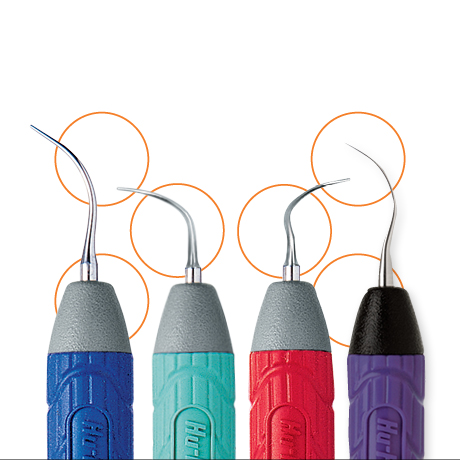
Reach deep into pockets and achieve efficient subgingival scaling with thin left and right ultrasonic inserts. The long curved shank allows for effective adaptation in both deep and shallow interproximal pockets, furcations, and root concavities. The probe-size tips offer smooth access to calculus, stain and attached biofilm in pockets greater than 5mm—an ideal solution for debridement of periodontal pockets. Incorporating left and right inserts into more clinical procedures can result in more effective and efficient debris removal.
CLICK HERE TO LEARN MORE!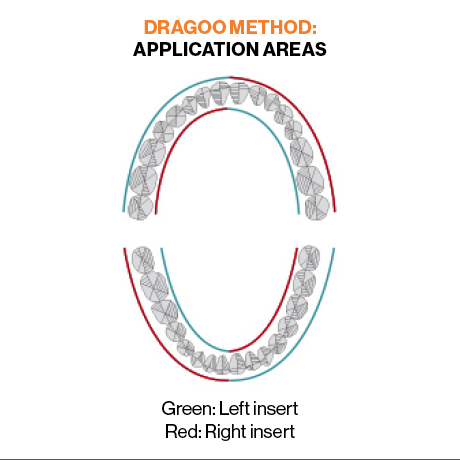
Your practice has invested in providing power scaling for the best possible patient care. And, while ultrasonic inserts work hard to remove heavy calculus and stain, they can also be delicate --needing care and attention to perform optimally. Following the usage tips below can help you to protect and extend the life of your ultrasonic inserts.
